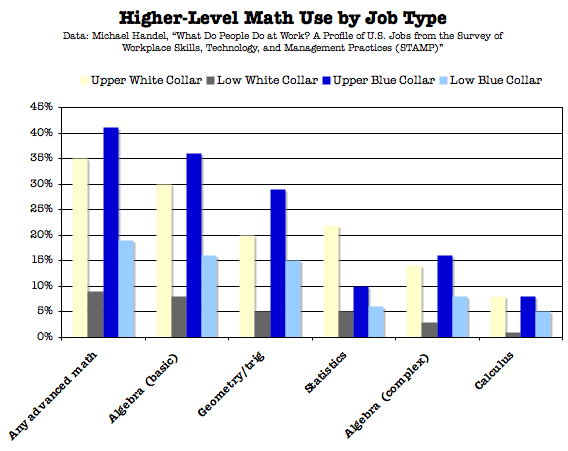Hi Finding Career Direction!>!
Hi Discover Yourself and Your Purpose;
How long has it been since you asked yourself what you want to be when you grow up?
If you haven't considered the idea since high school, then you may have settled into a job that is not fulfilling your professional aspirations, or your purpose.
Each of us has particular talents that, when expressed or exercised, make the world a better place. Most likely you enjoy doing these things, and you find that people respond well to you when you do them. Perhaps they're things you gravitate towards during out-of-hours activities, and that people respect you for.
When you develop these talents as far as you can, you can make your greatest possible contribution to the world, and enjoy personal and professional satisfaction that goes along with this.
Your Career Direction Journey;
The process of uncovering what you are meant to do, that is finding career direction, is a journey. It starts with discovering the essential "you": the person who truly resides behind the facades, defenses, and stresses of everyday life.
Once unmasked, your journey continues with specific career exploration and identification of a career that allows you to make good use of your talents. And it moves on with a focused job or career move, in which you identify the jobs you want and put yourself in the best possible position to get them. In fact, this journey never really ends because work itself is all about change, growth, development, and reinvention.
By taking a talent-based approach to your career search right from the start, you keep yourself heading toward the right career even when the actual direction shifts over time. This approach consists of sequentially answering three questions:
- Who Am I?
- What Do I Want to Do?
- How Do I Get Hired?
1. Discovering Who You Really Are;
The first question to answer is "Who am I?"
We'll take two approaches to answering this – firstly asking you to explore your talents, and secondly using psychometric tests to explore your preferences.
Exploring Your Talents;
First of all, consider your answers to the following questions:
- When have you been most committed, passionate and enthusiastic?
- When have you been most creative?
- When have you been most sure of yourself and your decisions?
- What do you consider to be your greatest accomplishment?
- When have other people considered you to be most successful?
- When have you enjoyed your work most?
- What talents were you relying on, and using, in these situations?
- For what would you take a very strong stand?
- What about the world puzzles or disturbs you that you could make an impact on?
- What jobs do you like to do at work when you have a choice?
- What activities are you drawn towards out of work?
- If money were no concern, what would you be doing?
Brainstorm each of these questions, and then use your answers to identify the top 3 talents that you most use when you're successful. Rank these in order.
Tip:
If you're having problems choosing, use a technique like paired comparison analysis to rank things in order.
Personality Inventories;
Next, we'll look at using personality inventories as a way of looking at your preferred way of working relative to other people.
There are many typologies available including Myers-Briggs, DISC (Dominance, Influence, Steadiness and Conscientiousness) and the strength finder evaluation in "Now Discover Your Strengths".
Tip 1:
Some of these cost quite a lot of money, however considering the importance of what you're doing, it is probably worth investing in them if you haven't already done so.
Tip 2:
It can be hard initially to see how to apply these tests. One trick is to turn things around, and as you identify possible careers, think about what personality type is most likely to be successful in these careers. Is there a match or a mismatch? We'll do this later.
Tip 3:
Treat these tests as advisory only – you can't capture the whole complexity of your personality and experience with only a few questions. That said, you'll probably find the tests quite insightful!
With personality testing you learn what you have in common with other people. You also discover potential points of friction with people of other personality types. While no personality type is good or bad, it does help you discover what motivates and energizes you. This in turn empowers you to seek those elements in the work you choose to do, and avoid the things that frustrate and demotivate you.
As you explore your personality you come to realize that who you are is really determined by the choices you make. You choose to react one way over another, or to prefer one thing to another. You can take this self-awareness one step further by examining why you make the choices you do. In psychological terms, what is your payoff for making the choices you make?
When you know the "why" it is easier to see how you can become fulfilled through the work you do.
Write a "Who I Am" Statement;
Now draw this together into a simple written statement of who you are. This is an important step toward self-discovery and defining your purpose. Use it to answer the following questions:
- What your talents and strengths are.
- The talents you achieve most with.
- The activities you get most satisfaction from.
- The type of activity the psychometrics you've completed guide you towards.
Tip:
When you're doing this, be careful not just to look back nostalgically at simple jobs where you performed well – after all, many different people could perform well in these situations, and this gives you little information.
Focus instead on more difficult areas where you made a positive difference, and where others didn't.
2. Finding Out What You Want to Do;
Now that you know who you are, the next stage is to think about what you want to do.
For your life to be balanced and fulfilled, your career must be aligned with who you are: Otherwise you'll be unhappy with work, and you'll probably underachieve. After all, ill-fitting jobs demand different talents from the ones that you have. If you try to pursue a career path that is at odds with your values, your beliefs, and your way of seeing the world, then you'll struggle constantly and be under a great deal of stress and pressure.
The starting point is to do some brainstorming on the jobs that you think would suit who you are. We'll then confirm this with some different psychometric tests, and then extend this list with some more brainstorming.
You then need to spend some time researching the top careers you've identified.
i. Exploring the Options You Know About;
Starting with your "Who I Am" statement, start thinking about all of the jobs you can see that would suit you someone with the talents and interests in that statement (by depersonalizing it in this way, you help to avoid "being too close to the issue.")
Starting here is particularly important if you're already established in a career: It's important to capitalize where you can on the experience and contacts you've already built up, compared with ditching everything and starting completely afresh (while this sounds glamorous and enticing, it puts you in the position of competing equally with other career starters, who may be much younger than you. On the other hand, if you're profoundly unhappy with your company, industry and profession, a radical career change may be the best thing...)
So start by asking yourself if your current role can be adapted to suit you much better; if there are other roles within your existing company that would be worth trying; or whether similar roles in other organizations might be more rewarding.
Once you've done this, extend out and brainstorm the other options available.
ii. Using Career Tests:
The next stage is to use online career tests to explore options that you might have missed.
Useful ones are:
Free, but limited career selection advice:
Princeton Review Career Quiz
Chargeable (but inexpensive, and with good selections of possible careers):
http://www.self-directed-search.com
http://www.assessment.com
iii. Thinking Further:
The unavoidable flaw with these career tests is that they're based on backward-looking data, and can only cope with the major career types. Because of this, they can't recommend new careers, nor do they know about less well-known careers.
Using the test results as a starting point, do some brainstorming to see if there are new technology careers which demand similar personality types, or if there are more obscure careers that may also be open.
iv. Pulling This Together.
You'll now have identifies a wide range of possible careers open to you. Now's the time to cut these down and prioritize them. We're not asking you to choose one now, but to cut down to your top 5 or 6 choices (the reason being that when you start researching these careers, some of them may turn out to be quite bad!)
Again, if you're having trouble prioritizing, use paired comparison analysis to rank your choices.
v. Perform Career Research;
Armed with a solid understanding of how you can participate in fulfilling work, you now need to research the various options you have to make money doing so. Career research is not something many people relish, but it is necessary in order to eliminate choices that seem to be great fits on the surface but really won't align with your mission and purpose.
Yes, this is quite tedious. But think about the consequences of getting things wrong! Surely it's worth spending time exploring your options, rather than a lifetime kicking yourself for making a bad choice!
Methods for researching careers include:
- Researching the career using sites like Acinet.org, so that you can understand industry trends, job pay levels, qualifications needed, job availability, etc.
- Conducting your own PEST Analysis to confirm your own view of likely career trends.
- Reading industry/career magazines and get a sense of how "happy" the industry is, who the major players in it are, and what the issues and problems within it are. Also, looking at job vacancies to see if the career is in demand.
- Understanding what talents and personalities make people successful in the career, and mapping these back against your own talents and personality.
- Attending professional and trade shows.
- Participating in job fairs.
- Visiting company websites, and keep an eye on how companies are talked about in the press.
- Understanding where organizations are based, and deciding if you're prepared to travel to interviews, and perhaps to move.
- Volunteering.
- Working part time and/or seasonally in the industry.
Tip:
Be careful when using career trends to identify career possibilities: The desire to pursue an up and coming career may overshadow your mission and purpose. This will only lead to dissatisfaction down the road.
Also be aware that there's a natural desire from people within an industry to inflate its prospects (to ensure a good supply of new recruits in the future.) Take official figures with a pinch of salt!
By the end of all of this research, you may have rejected several possible careers. Now's the time to narrow down to one! Again, Paired Comparison Analysis may be useful here, however so can Grid Analysis which helps you make comparisons where many variables are involved.
3. Answering "How do I Get Hired?";
In this last phase you answer, "What am I going to do to get hired?"
With your "Who I Am" statement and your research as your compass, now you need to actually map your progress. Many people tend to move from their purpose right into job search mode. This is a mistake because unless you have a plan, it is far too easy to get derailed by a lucrative job offer, an opening that Uncle Vinny has, a job that sounds really glamorous, or a whole host of other distractions.
Develop your plan first and you're more likely to get where you want to go, faster.
Tip 1:
The more contingency plans you have the more likely you will be able to survive the inevitable setbacks. You will also have much more confidence in yourself despite the bumps in the road.
Tip 2:
Recognize that the more opportunities you have, the better the job that you'll be able to choose. Concentrate on creating as many opportunities as possible!
Now you are free to pursue your dream career with confidence. There are certainly no guarantees but with the right amount of planning and a sufficient dose of reality, the career that you are meant for will materialize.
Signs a career direction evaluation may be in order:
- Your job lacks challenge and excitement for you.
- You are feeling unappreciated.
- Your promotional and/or development opportunities are limited.
- You are no longer having fun.
- Learning is replaced with routine.
- You sense that your skills and talents are being wasted.
- You are suffering from stress or depression.
Key Points;
Finding career direction is a process. The more effort you put into the planning stages the better your results. Uncovering your true self and your purpose is heavy, emotional work and you may have to go through this process a few times in the span of your working life. The effort however, is certainly worth it when you end up with a clear sense of the direction your career should be taking.

























.jpg)









